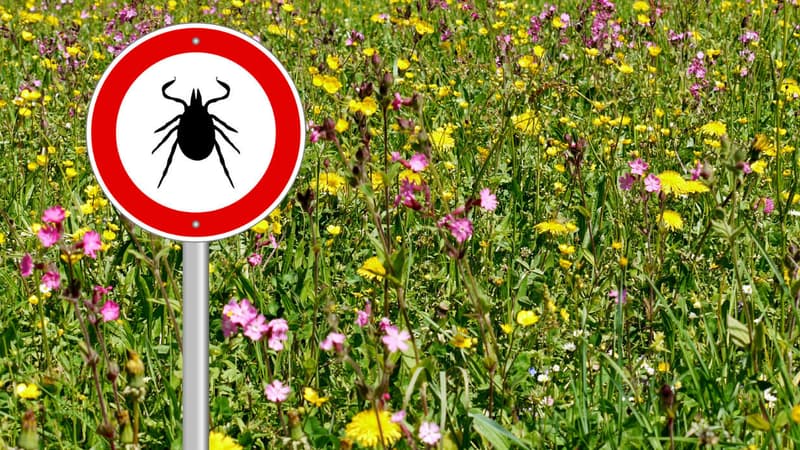While spring and long weekends are conducive to walks in the woods, the period is also associated with the activity of ticks, these parasitic mites that live in wooded and planted areas. Ticks are known to transmit Lyme disease to the people they bite.
However, being bitten by a tick does not mean the automatic transmission of Lyme disease, and the percentage of infected ticks in France varies from 0 to 20% depending on the region and the season, explains Inrae, a public research institute specializing in agriculture, on your site
Lyme disease is associated, in the most advanced cases, with skin, neurological, joint, cardiac, ophthalmological or cognitive disorders. How to protect yourself from tick bites and avoid possible infections?
• Equip yourself properly
Virginie Renaud, a volunteer with the France Lyme association, advises on the BFMTV microphone to “equip yourself well before going out”. For a walk in the woods, she recommends bringing a hat because ticks can “fall off trees.” Tucking your pants into your socks also helps prevent these mites from crawling up your legs.
More generally, Public Health France, an establishment under the Ministry of Health, recommends covering up in long clothing and staying on the paths, avoiding bushes, ferns and tall grass. Repellents can also be sprayed on clothing to ward off ticks.
• Check your skin well after an outing
These gestures do not guarantee the absence of stinging. “After an outing in nature, carefully inspect your body, in particular the armpits, skin folds, scalp, back of ears and neck,” recommends the National Forest Office on its site.
Inrae also highlights the importance of being precise in this inspection, because “a tick in the nymph stage only measures 1 to 3 mm.”
• What to do in case of a bite?
After a tick bite, the mite must be removed “as quickly as possible” without applying any product, as this could cause it to regurgitate, explains Seguros de Salud on its site. You can do this using a tick remover, which is sold in pharmacies. In case of failure on the first attempt, “do not start over” and “ask your pharmacist or doctor for advice,” recommends Seguros de Salud (Ameli).
After removing the tick, disinfect the skin and monitor the bitten area for a month. “If you see a prolonged inflammatory red plaque appear between 3 and 30 days after the bite, you should see your doctor because it is erythema migrans, a symptom of Lyme disease,” warns Ameli.
Source: BFM TV


